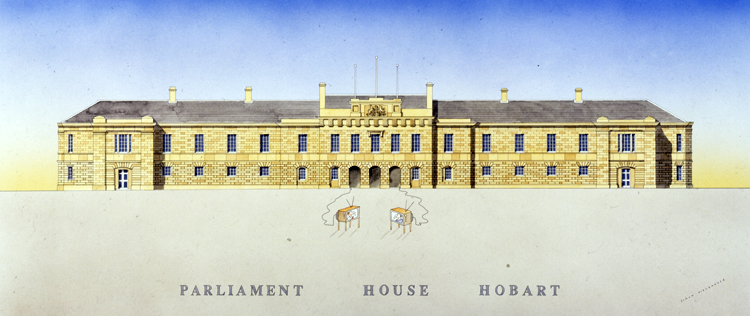
Parliament House - Hobart
Parliament House Hobart: A Symbol of Tasmania's Democratic Heritage. Parliament House in Hobart, the capital of the Australian state of Tasmania, stands as an architectural gem and a symbol of the state's democratic heritage. This iconic building holds immense significance not only in terms of its architecture but also as the epicenter of Tasmania's political and legislative activities.
Architecturally, Parliament House Hobart is a striking example of neoclassical design. Designed by architect John Lee Archer, it was constructed between 1834 and 1860. The building's neoclassical facade, characterized by its grand columns and intricate detailing, draws inspiration from classical Greek and Roman architecture. The use of sandstone, which is characteristic of many historic buildings in Australia, lends an air of timelessness and permanence to Parliament House. Its stately proportions and harmonious symmetry exude a sense of authority and importance, fitting for the center of government and the legislative process.
Beyond its architectural splendor, Parliament House plays a vital role in Tasmania's political landscape. It serves as the meeting place for the Parliament of Tasmania, which is the state's legislative body. The Tasmanian Parliament consists of the House of Assembly and the Legislative Council, and both chambers convene within this historic building to debate, pass, and amend legislation that affects the lives of Tasmanians.
The significance of Parliament House Hobart extends far beyond its legislative function. It is a symbol of Tasmania's enduring commitment to democracy. Tasmania has a unique political history, having been the first place in the world to grant women the right to vote in parliamentary elections. This progressive legacy is deeply intertwined with Parliament House. It is a place where lawmakers, both past and present, have striven to uphold the principles of democracy, including social equality and representation for all.
Moreover, Parliament House serves as a platform for preserving and showcasing Tasmania's rich cultural heritage. The Tasmanian Parliament's art collection, housed within the building, comprises a diverse array of artworks, historic documents, and relics, providing visitors with a glimpse into Tasmania's past. This commitment to preserving the state's history and heritage underscores the importance of Parliament House not just as a political institution but as a cultural repository.
Parliament House Hobart also plays a crucial role in fostering civic engagement and public participation. The building is open to the public, offering guided tours that allow visitors to explore the historic chambers and witness the democratic process in action. This transparency and accessibility are essential for promoting public awareness and understanding of government operations.
In conclusion, Parliament House Hobart is a testament to the enduring power of architecture and its role in symbolizing the principles of democracy. Its neoclassical design and historic significance make it a cornerstone of Tasmania's heritage. Moreover, as the legislative hub of the state, it ensures that the democratic ideals upon which Tasmania was founded continue to flourish. Whether as a place of governance, a historical treasure trove, or a symbol of democratic progress, Parliament House Hobart is a beacon of Tasmania's democratic heritage and a source of pride for all Tasmanians.